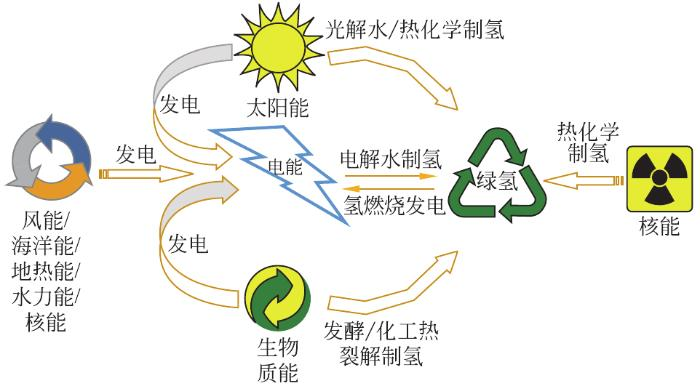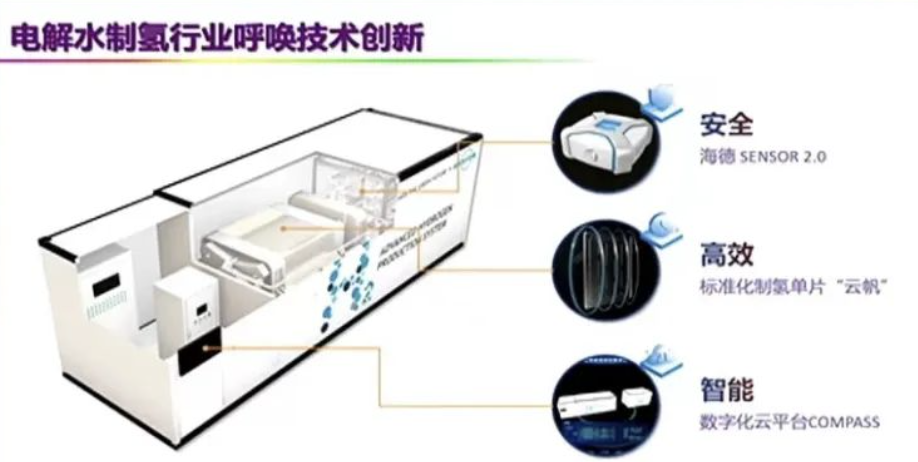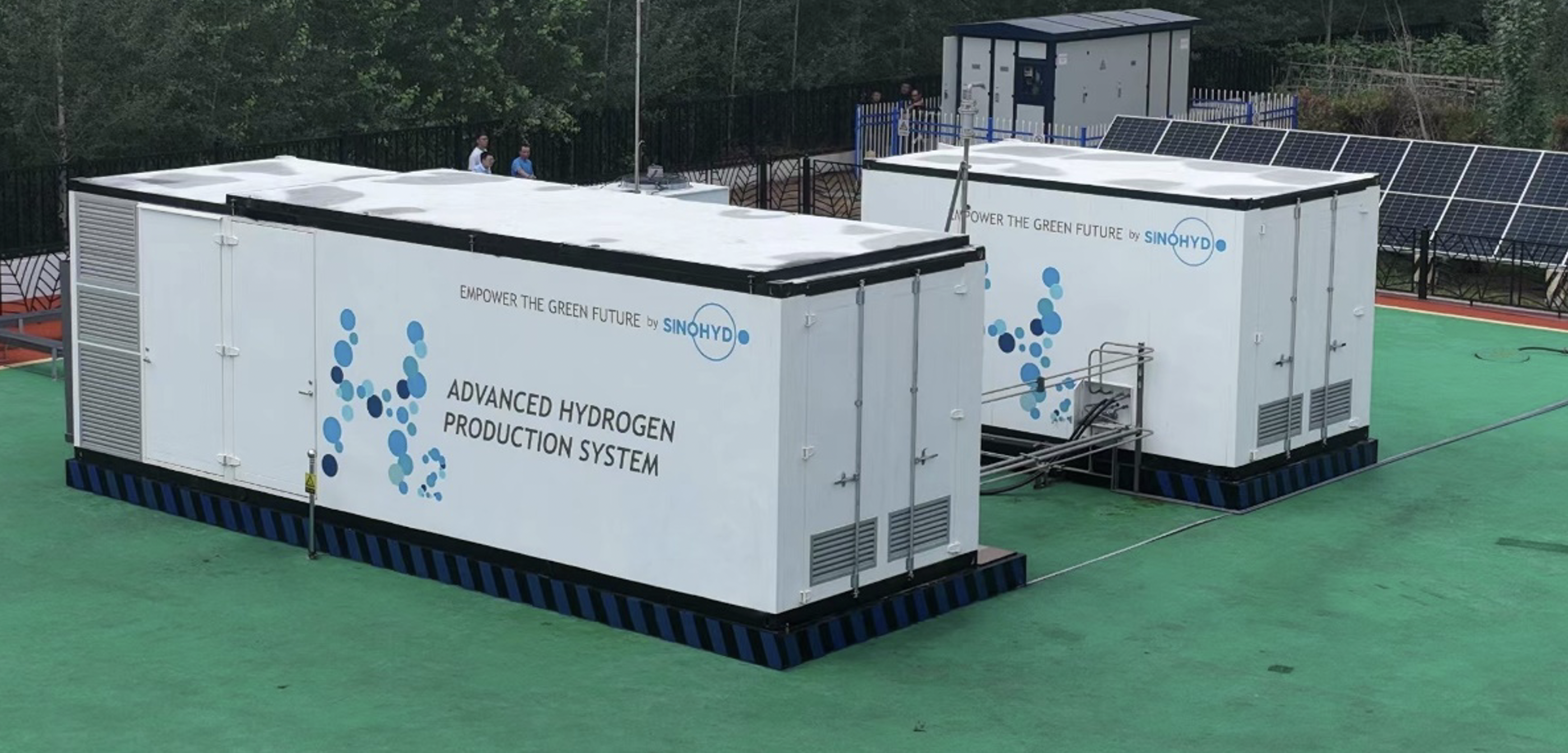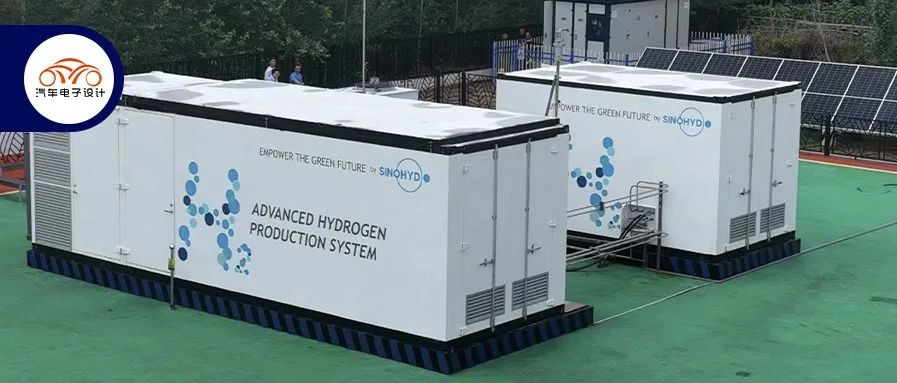Author: Zhu Yulong
2022, with the changing world situation and the emerging energy security issues in Europe, more and more people have realized that energy security is a core issue that a country needs to focus on in developing its manufacturing industry. For China’s automobile industry, solving energy security is also a required course – can we form a complete closed loop around the development of new energy, from photovoltaics, wind power, and new energy vehicles (pure electric and plug-in/hybrid)?
My understanding of this is: China has a vast territory and has invested heavily in grid construction; from a long-term development perspective, solving China’s energy security issues, and integrating fossil fuels and new energy, hydrogen economy will be one of the themes of future development. In fact, in the global energy transformation and carbon neutrality process, hydrogen energy plays an irreplaceable role. China has a good foundation for hydrogen production and a large-scale application market, and the hydrogen energy industry is showing a positive development trend.
Currently, relying solely on chemical energy storage to drive China’s energy has shortcomings. We have seen that the combination of lithium batteries with solar and wind energy has already led to a certain level of resource problem in the upstream of lithium battery resources. China’s energy security issues need to walk on several legs. Hydrogen fuel cell technology can directly convert the chemical energy of hydrogen and oxygen into electrical energy, and can also be made into hydrogen gas-fired power generation. Hydrogen energy storage has several advantages: large capacity and long-term storage can fully utilize renewable energy; energy storage has considerable economies of scale; production, storage, and transportation can be flexible (pipeline, trailers, high-voltage electricity, long-distance hydrogen production, etc.). If it can be applied on a large scale, it can become the ultimate solution to solving the energy crisis in the future.

Development of Hydrogen Energy
Hydrogen has the characteristics of abundant reserves, high energy density, and recyclability. It can achieve zero greenhouse gas emissions and is an energy component that China cannot ignore in achieving its 2060 carbon neutrality target and an essential part of the future national energy system. China is currently the world’s largest hydrogen producer, with statistics showing that the current international annual hydrogen production is about 63 million tons, and China is the world’s largest hydrogen producer, with an annual hydrogen production of about 33 million tons, accounting for one-third of the world’s hydrogen production.Amongst these production capacities, coal-derived hydrogen and natural gas-derived hydrogen account for nearly 80 percent, while industrial byproduct hydrogen, such as chlorine-alkali, coke-oven gas, and propane dehydrogenation, account for around 20 percent of the total, and green hydrogen has a small scale. Green hydrogen is the direction of development for China’s hydrogen industry, and it has enormous potential.
What is green hydrogen? According to the source of hydrogen, hydrogen can be classified into blue hydrogen, green hydrogen, and grey hydrogen.
-
Grey Hydrogen: Hydrogen gas produced from the combustion of fossil fuels. In fact, such hydrogen accounts for 95% of global hydrogen production. Hydrogen atoms do not exist in nature but are attached to oxygen and carbon atoms found in chemical compounds, carbohydrates, and hydrocarbons. If the electricity used is produced by fossil fuels, it is called grey hydrogen. During the production of grey hydrogen, by-products such as carbon dioxide and other greenhouse gases are formed.
-
Blue Hydrogen: Also produced from fossil fuels, mainly natural gas. Introducing carbon capture and storage technology makes blue hydrogen more difficult to obtain globally than green hydrogen.
-
Green Hydrogen: If clean electricity (zero carbon emission) is used, the produced hydrogen is green hydrogen. Green hydrogen is produced using renewable energy via the electrolysis process, and its carbon emissions can reach net zero.

Green hydrogen is important for the development of our energy strategy, as seen from the means of obtaining green hydrogen.
The ideal energy source for producing green hydrogen is green electricity generated by photovoltaic and wind power. “Wind and solar” green electricity + green hydrogen is a mutually beneficial dual environmental protection route.
◎Solar energy and wind energy are converted to green electricity, which is then used to produce green hydrogen through electrolysis equipment. The power generation efficiency and comprehensive energy efficiency of hydrogen fuel cells are much higher than those of traditional fossil fuels (3 times that of petroleum, 3.9 times that of alcohol, and 4.5 times that of coal), with no carbon emission.
◎Constructing hydrogen production bases in wind and photovoltaic power generation clusters can effectively consume wind and solar energy. Wind and solar power have strong volatility and randomness. Using wind and solar power for electrolysis of water to produce hydrogen can increase energy storage and expand energy utilization.
◎China’s large-scale wind and photovoltaic power generation bases are located in underdeveloped areas such as Xinjiang, Inner Mongolia, and Gansu, where local consumption of wind and solar power is very limited. The opening up of hydrogen demand not only finds large-scale markets for photovoltaic and wind power grids but also further promotes optimization of green electricity production capacity.With the support of ultra-high-voltage transmission and the storage demand for part of the electrical energy, the green hydrogen industry has great market potential, with trillions of industrial potential in China alone. Green hydrogen will be an important energy medium for China towards 2030 and 2050.
In China, the booming hydrogen fuel cell vehicle is the pioneer and breakthrough point of green hydrogen. With the revolution of new energy vehicles in China, more and more renewable energy is utilized to generate electricity, and hydrogen can be produced from electricity – hydrogen and electricity are the two main energy carriers of the renewable energy revolution, and can be interchanged.

Preparation of Green Hydrogen
The mainstream method of producing green hydrogen is through water electrolysis by electric power generated from renewable energy. There are three main technologies for water electrolysis: alkaline water electrolysis (AWE) hydrogen production, proton exchange membrane (PEM) water electrolysis hydrogen production, and solid oxide electrolysis (SOE) hydrogen production technology.
In fact, to develop the green hydrogen industry, it mainly relies on the electrolysis of water to generate hydrogen. In the near, medium, and long term, China is also carrying out the research and development of these three water electrolysis hydrogen production technologies.
- Alkaline water electrolysis hydrogen production: The current most mature electrolysis technology in the market occupies the dominant position. The alkaline electrolyte usually uses a potassium hydroxide aqueous solution, which transports ions during the process of water electrolysis to produce hydrogen and oxygen through a porous asbestos membrane.
- Proton exchange membrane water electrolysis hydrogen production: PEM electrolytic cells are composed of two electrodes and one membrane, without electrolyte, only pure water is required. The electrode material is porous platinum with a catalyst attached to the surface of the exchange membrane.
- Solid oxide electrolysis hydrogen production: After water vapor enters the tubular electrolytic cell, it is decomposed into H+ and O2- at the cathode, and H+ obtains electrons to generate hydrogen.

In the future, the production cost of green hydrogen will continue to decline – with the continuous decline in the cost of renewable energy generation, economies of scale, the accumulation of experience of existing projects, and technological progress, all of which will make green hydrogen a more economical energy source. From the current perspective, the potential total market for green hydrogen power generation will reach 1 trillion U.S. dollars by 2050. The green hydrogen industry roadmap has just started.## Bottlenecks and Solutions for Water Electrolysis
However, there are several problems with hydrogen production by water electrolysis:
- Safety: First of all, the current hydrogen production equipment mostly comes from mainstream technology routes, which leads to many problems in the production process.
Hydrogen is more flammable and explosive than other minerals, it is colorless and odorless, and it is easy to leak and diffuse. The combustible concentration of hydrogen in normal air pressure and temperature is between 4% and 75% (by volume), with a wide range. The explosive limit in normal air pressure and temperature is between 18.3% and 59% (by volume), with an explosion speed of 1480m/s to 2150m/s. When hydrogen leaks and combines with air or other oxidants, it is easy to ignite, and it will release a large amount of energy. The characteristic of the explosion is to suddenly cause high pressure and produce a supersonic shock wave. The flammability and explosiveness of hydrogen are very different from that of petroleum and natural gas. Its power and destructiveness are extremely strong, and its consequences are much more serious.
This poses high requirements for the tightness of hydrogen production equipment.
- Cost
The amount of electricity consumed by electrolytic hydrogen production is very large, accounting for about 75% of the total production cost, which makes people daunting. Due to the cost problem, the current cost of producing green hydrogen is 17.7 yuan/kg, which is three times the cost of gray hydrogen production. It can be seen that inexpensive hydrogen production will be the key to the popularization of green hydrogen. The main bottleneck that restricts the electrolysis of water to produce hydrogen is the cost of electricity, which needs to solve the problems of efficiency and cost.
Due to the bottleneck of water electrolysis to produce hydrogen and the availability of low-cost alternative solutions for energy demand, there has not been a major breakthrough in technology for a long time. Currently, the industry has high requirements for personnel and technological innovation. But with the issue of energy security being put on the agenda and the strategic prospect of green hydrogen, there are many companies silently working on this forward-looking field, and more and more professionals are joining this industry chain.
For example, as a provider of green hydrogen production, hydrogen storage, and hydrogen safety solutions, HYDROGEN has been committed to leading technological innovation in the green hydrogen industry. In August of this year, HYDROGEN released a self-developed electrolytic hydrogen production system “Hydrogen Boat” in Ordos, which integrates three major green hydrogen technologies: hydrogen safety technology HYDROGEN SENSOR 2.0, YUNFAN electrolytic hydrogen production monolithic, and hydrogen production digital platform COMPASS. It provides a secure, efficient, and intelligent solution for advanced green hydrogen preparation to address the pain points currently plaguing the green hydrogen production industry.
- Safety
As mentioned earlier, hydrogen leakage can cause serious consequences because it is difficult to detect in time. Therefore, monitoring of hydrogen gas is required.
Hydrogen SENSOR 2.0 wireless hydrogen safety sensor by Hyde can realize real-time monitoring of hydrogen gas leaks and reduce the explosion risk to a minimum. The predecessor of this sensor appeared on the main torch platform of the Winter Olympics and played an important role in protecting the Olympic flame. Based on the first generation, Hyde Hydrogen Energy introduced the wireless 2.0 version, which is not only more convenient to use, but also has a higher safety factor with more measuring points and more accurate responses.
- Efficiency
The cost of hydrogen production is the key factor hindering the promotion and popularization of hydrogen energy. The electrolysis water hydrogen production industry has been conducting technological innovations in improving equipment efficiency.
Hyde Hydrogen introduced the standardized square hydrogen production monomer “Cloud Sail”, which is a dynamically expandable standardized hydrogen production unit that greatly improves the overall operating efficiency of hydrogen production and provides technological possibilities for the low-cost and large-scale landing of green hydrogen. Compared with traditional circular electrolysis units, Cloud Sail has a thin square structure with more uniform flow field distribution. It has smaller membrane impact and achieves more complete electrode reaction, thus improving current density. By using the expandability of Cloud Sail, hydrogen boats can expand production capacity from 50 standard cubic meters/hour to 500 standard cubic meters/hour in a single prefabricated cabin. For the hydrogen production plant site plan, Cloud Sail can be expanded to 1,000 standard cubic meters/hour in a single slot. Based on the standardized hydrogen production unit “Cloud Sail”, the “Hydrogen Boat” system can meet the green hydrogen preparation needs of customers in different scales and environments.
- Digital Management
In addition to its flexibility, Cloud Sail also integrates a tracking system on the monomer that can collect information in real-time by employing intelligent detection of CVM technology, and can instantly track the operating conditions of each monomer. It also has four functions of digital twinning, safety warning, intelligent operation and maintenance, and energy management, realizing “What You See Is What You Get” on the cloud platform.
The intelligence, flexibility, and convenience at the hardware level can support the creation of hydrogen production digital cloud platforms and achieve nationwide deployment of all-weather monitoring. After a malfunction occurs, only the erroneous monomer needs to be replaced, and the repair time of the entire equipment is reduced from several weeks to several hours without requiring the whole machine to be transported back for repair. “Cloud Sail” brings hydrogen production into a new stage of digital and precise management.The “hydrogen boat” formed by integrating these technologies together can ensure a good practicality. Currently, Hyedge Energy has already launched the first smart zero-carbon hydrogen production demonstration project in Inner Mongolia. They will also co-build a 1 MW photovoltaic demonstration park with the Carbon Neutral Research Institute to realize the closed-loop application of hydrogen energy within the institute.

In summary, China aims to achieve carbon neutrality in the future, with a target of over 80 million tons of green hydrogen. The International Hydrogen Council predicts that by 2050, the cumulative reduction of carbon dioxide emissions from global hydrogen utilization will be 80 billion tons, with a reduction of 7 billion tons in that year alone. In this process, green hydrogen is an important step for the entire renewable energy industry. The “hydrogen boat” technology offered by Hyedge Energy provides an important solution in the process of the water electrolysis preparation.
The hydrogen energy industry chain is very long, and hydrogen fuel cell vehicles are a pioneering breakthrough. We are improving the technological routes in hydrogen technology exchange, hydrogen energy storage, hydrogen power, transportation and applications step by step. The application range of green ammonia also has great potential for development. In the future, ocean-going cargo ships and long-haul aircrafts will have gas turbine engines as an alternative. The entire industry chain needs more industry pioneers such as Hyedge Energy to drive the development of the entire hydrogen energy industry chain through technological innovation and industrial practice.
This article is a translation by ChatGPT of a Chinese report from 42HOW. If you have any questions about it, please email bd@42how.com.
